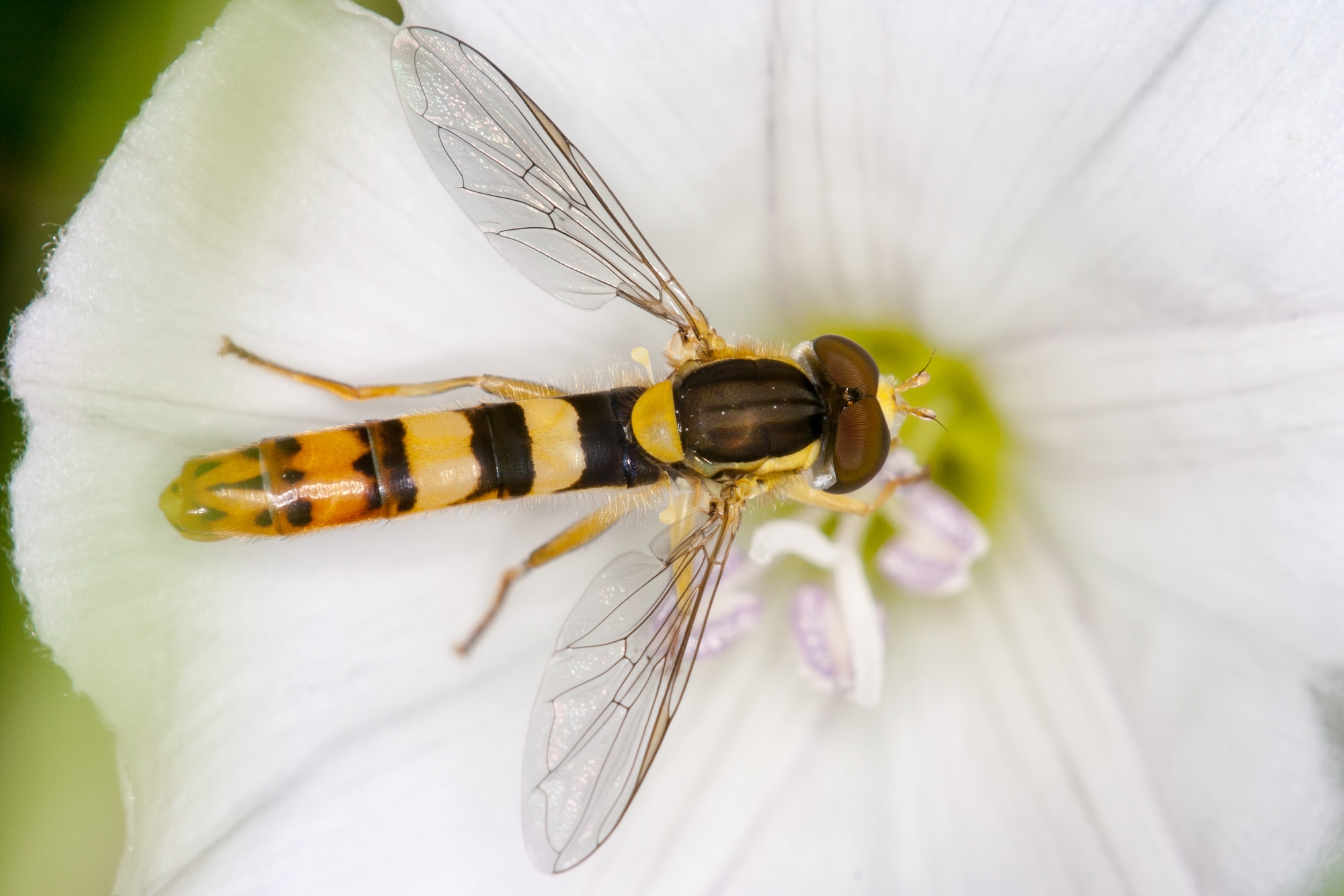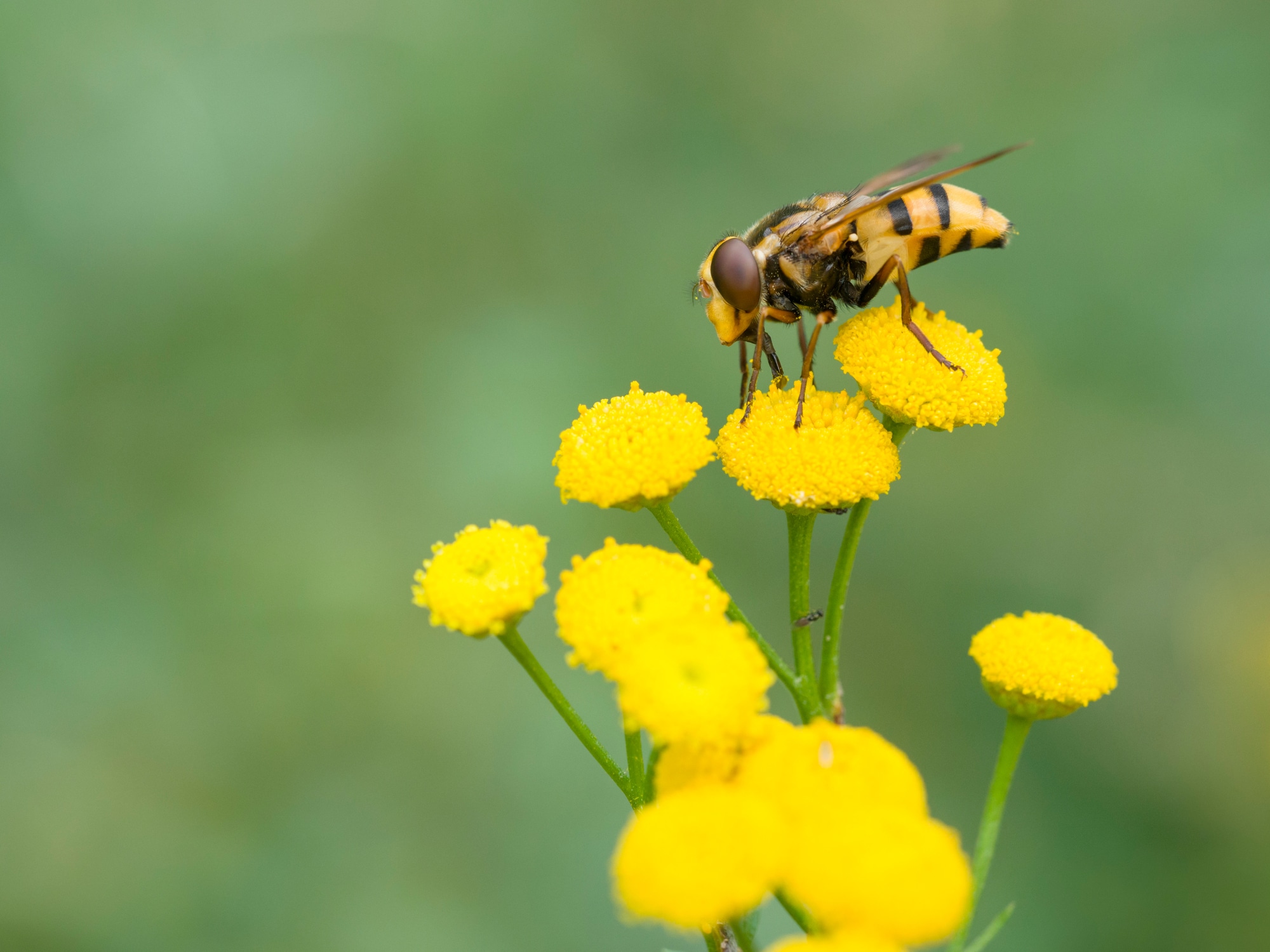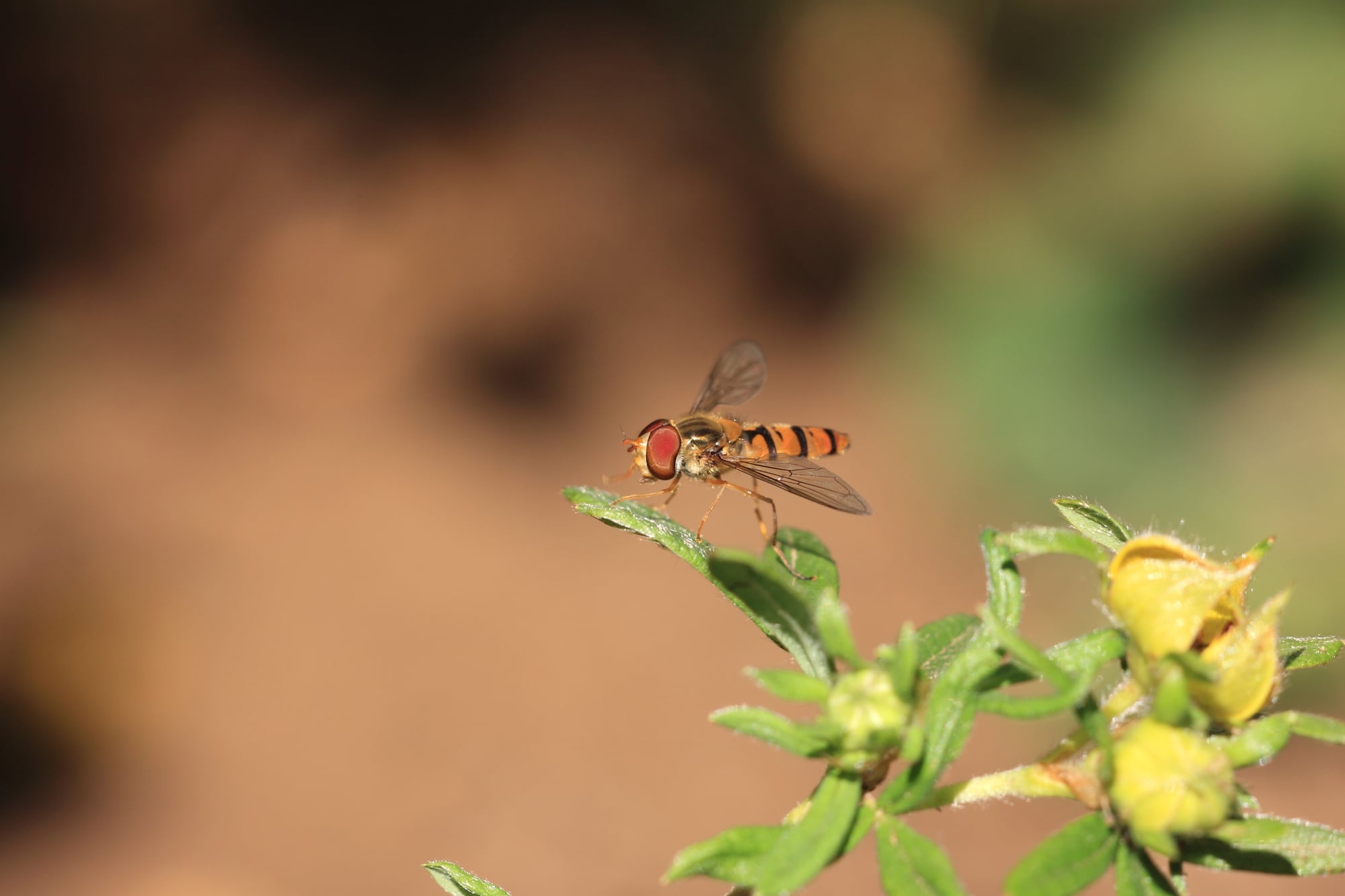Hoverflies go by many other names, such as flower flies, syrphid flies, and drone flies. They make up the insect family Syrphidae and belong to the order Diptera (true flies). Hoverflies are an extremely common species; in total, there are about 2000 species of hoverflies worldwide of which 182 species have been recorded in Australia alone.
What Does a Hoverfly Look Like?
Hoverflies are among the most brightly coloured of all other flies. They can be distinguished by their black and yellow stripes that extend from just above their eyes to the tips of their abdomens. The pattern on the head is made up of a dark triangular blotch in front of each antennae, widening into orange spots or stripes at the top side. They can look strikingly similar to wasps if you don’t know what to look out for.
Males have long pincers that they use to grasp females during mating (called clasping). Compared with other flies, male hoverflies have shorter tails and more slender hind legs for faster flight.
Hoverflies are delicate with almost transparent wings. In terms of size, the average hover fly is between 4 and 12 millimetres long. Their eyes are large and powerful, so they can hover in front of flowers to catch scents wafting through the air.

Hoverfly Larvae Identification
The larvae (maggots) can be identified by their green or brown bodies, short legs and large heads; which is much bigger than the rest of their body. Also, they have two tail-like appendages (cerci) at the rear end of their body.
How Can You Tell If a Bee Is a Hoverfly?
Although this common species may be one of the best examples of Batesian mimicry, bees can be quickly distinguished from hoverflies due to their hairy bodies and wasp-like waist.
So, how can you tell the difference between a bee and hoverfly? The best way to distinguish a hoverfly from a bee is to look at the antennae. Bees have thickish antennae, whereas hoverflies have thin and hairless antennae. Hoverflies also lack the dense coat of bees, while their wings are much more translucent.

Do Hoverflies Sting Or Bite?
Due to their harmless nature, there is no cause for alarm if you see these true flies around you, whether in the deep wild or in your home garden. Although hover flies may look like wasps and mimic the fearsome-looking European hornet, they are, in fact, harmless. They do not sting or bite and should not be alarmed if you see a hover flies around your yard.
Are Hoverflies Good Or Bad?
Sadly considered as pests by some, hoverflies are good because they are major pollinators of plants, particularly those that require cross-pollination. Some of the plants that benefit from hoverfly species pollination are orchids, lilies, and vegetables such as broccoli, peas, and pumpkins.

What Do Hoverflies Eat?
Hover flies are not true parasites and do not feed on plants. The majority of adults feed on nectar and pollen from flowers by sucking the liquid up through the proboscis (and spiral-shaped mouths), which is located at the tip of their abdomen.
They can also make use of scents left by other insects to help locate food sources. For example, when a hover fly finds a patch of ripe raspberries, it will look for other insects’ scent trails, including ants and wasps.
Larvae Diet
The larvae (rat-tailed maggots) are voracious predators that eat aphids and other small arthropods that they catch with their two long front claws. They then suck out the body fluids of these arthropods before moving on to their next meal.
Where Do Hoverflies Live?
This family of insects is incredibly diverse and can be found in natural habitats around the world wherever plants are growing. They can be found in various climates and habitats, from coastal areas to ponds, and tropical rain forests to urban gardens.
Hover flies can be solitary or live in groups, depending on their diet. Many of the different species live their entire lives on one particular plant, such as the common whitetail, which is a bee fly that feeds on privet flowers. Hover flies are often found visiting garden flowers when laying their eggs, and are usually mistaken for honey bees. Fragrant herbs in your garden may attract hover flies, and also if there’s an abundance of aphids.

Hoverfly Life Cycle
Female hoverflies lay eggs in soil or in decaying wood. The eggs hatch into larvae that over a period of about two weeks, transform into pupae, which rest inside cocoons made of silkworm or beetle-like silk. The pupae turn into adult flies after four to six weeks. Mating occurs shortly after egg hatching, and the females lay eggs a few days later; one male can try to fertilize multiple female’s eggs.
Sources and References
- 8 Interesting Facts About Hoverflies – cropscience.bayer.co.uk
- Hover Fly Information: Plants That Attract Hover Flies To The Garden – gardeningknowhow.com
Sam loves to learn about animals and their habitats. He has been a nature lover from a very young age, and has been writing papers and articles about wildlife for as long as he can remember.

I have had what looked like a MASQUERADING SYRPHID FLY, HELOPHILUS SP. In my garden a couple of days ago but can only find reference to these being in North America. Do they appear in the UK?